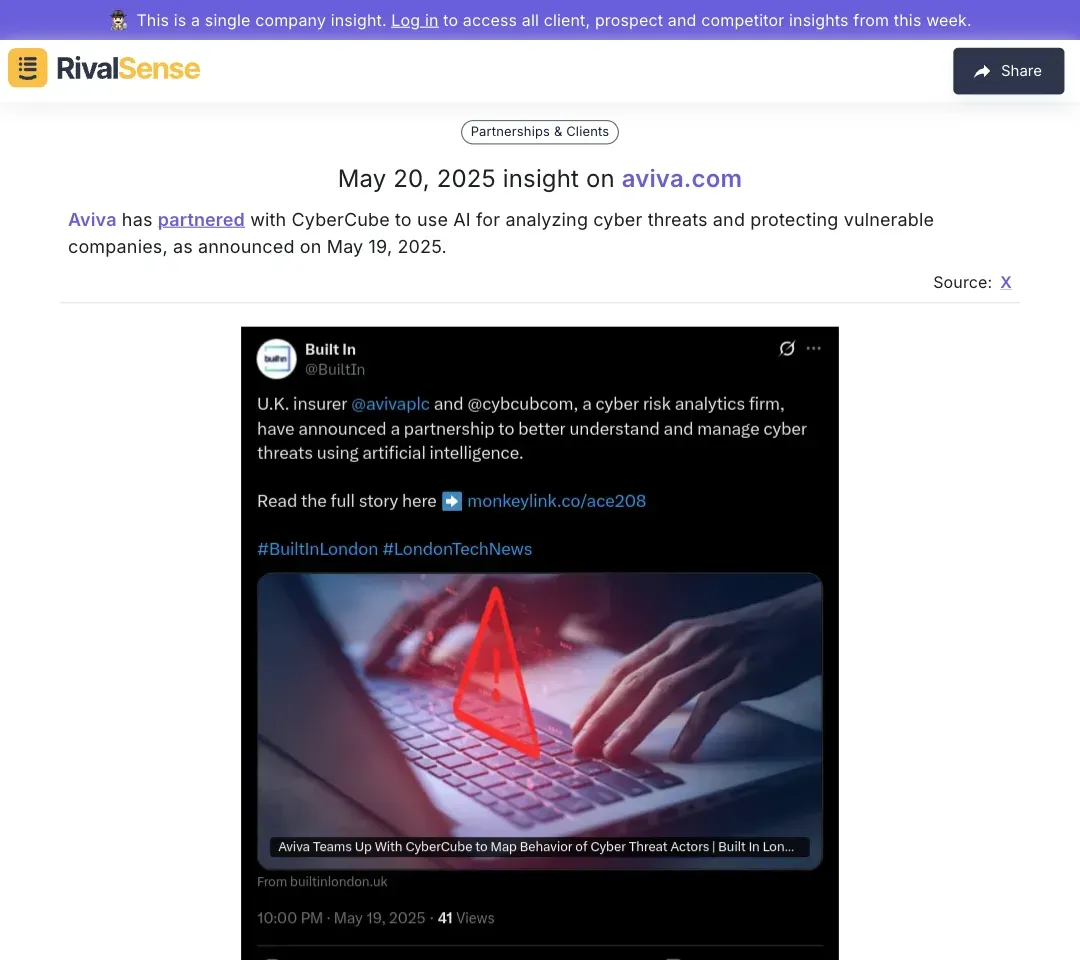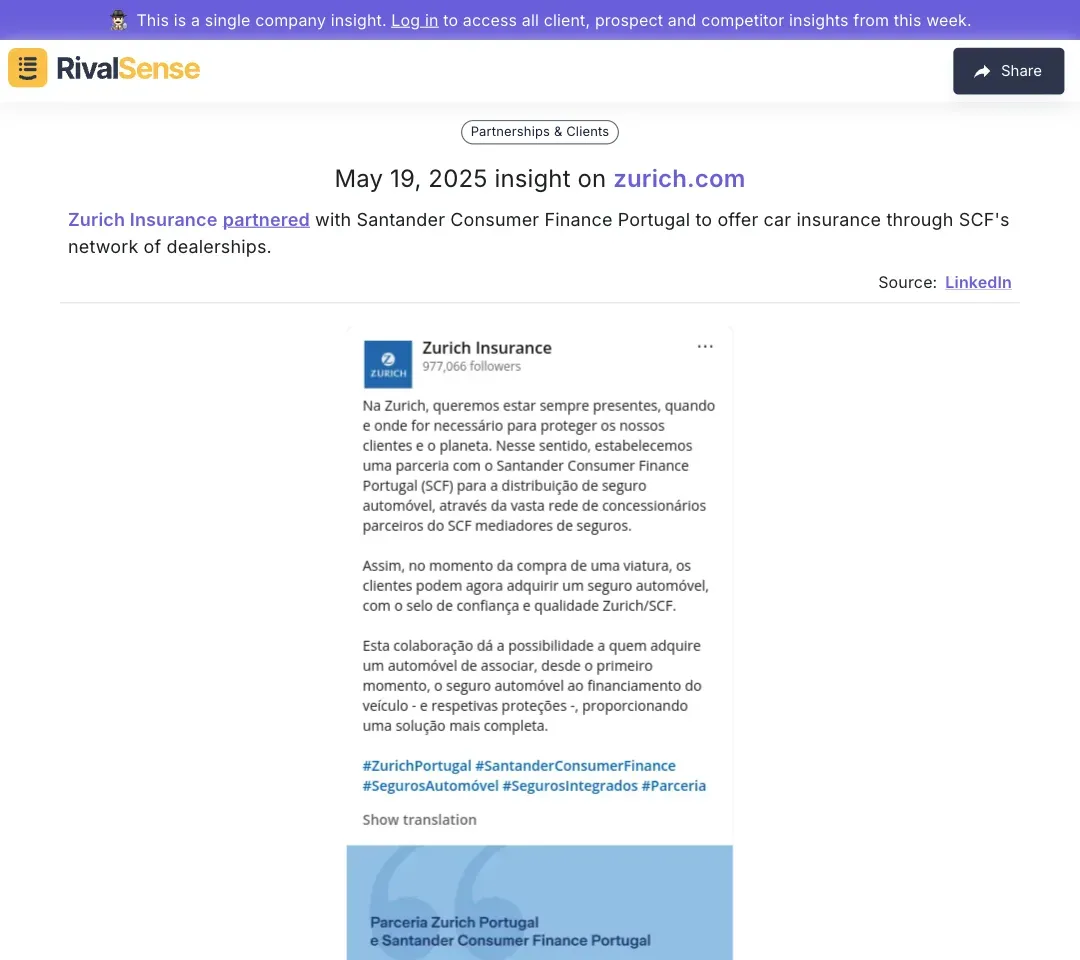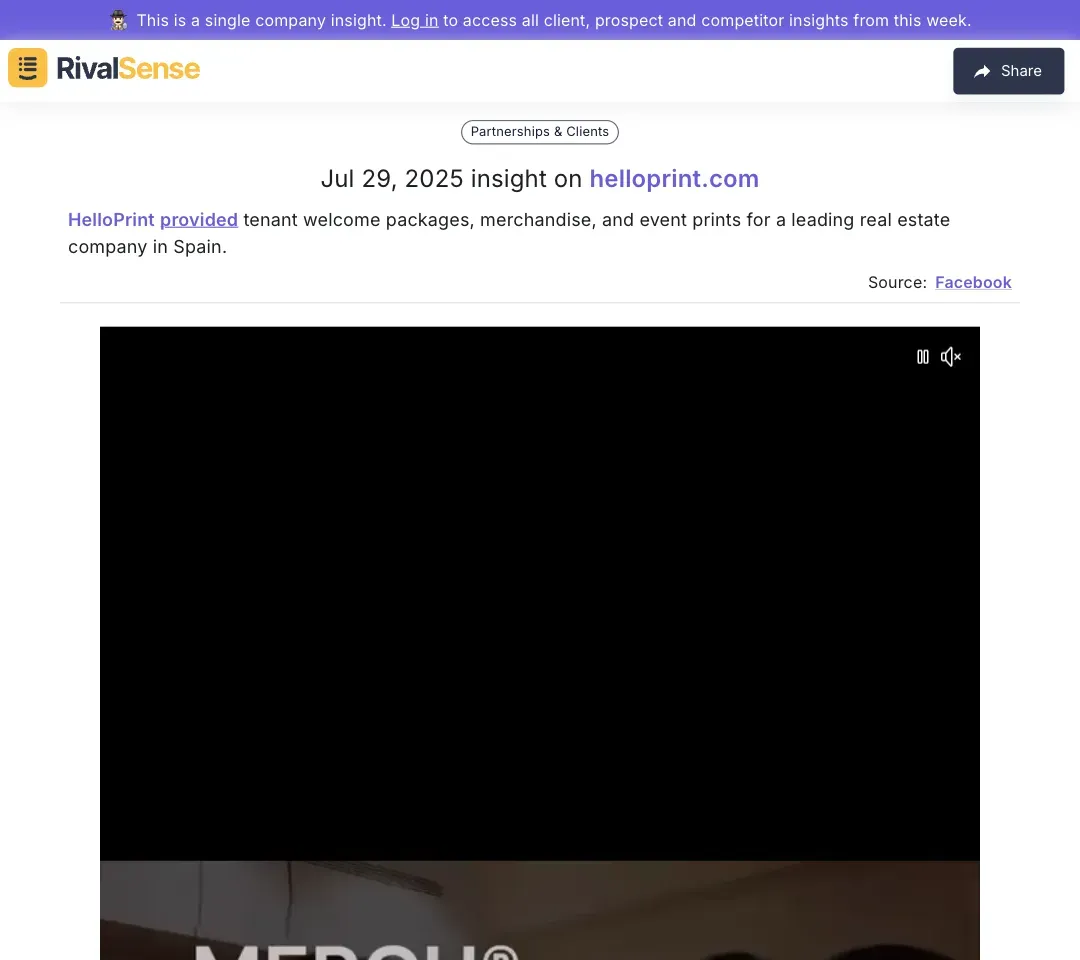How to Leverage Competitive Intelligence for Strategic Partnerships
In today’s hyper-competitive business landscape, knowing your competitors’ moves isn’t just helpful—it’s critical. Whether you’re a startup founder or a seasoned CEO, competitive intelligence (CI) can reveal gaps in your strategy, uncover partnership opportunities, and help you stay ahead of market shifts.
This guide dives into how to use CI for strategic partnerships, with real-world examples uncovered by RivalSense.
Why Competitive Intelligence Matters for Partnerships
Competitive intelligence goes beyond tracking pricing or product updates. It’s about decoding the “why” behind competitors’ actions—like partnerships or vendor selections—to inform your own strategy.
🔍 Example: Aviva’s AI-Powered Cyber Risk Partnership

Aviva’s partnership with CyberCube (May 2025) highlights how insurers are leveraging AI to mitigate cyber risks—a trend competitors can’t ignore.
Key takeaways:
- Trendspotting: Aviva’s move signals a broader industry shift toward AI-driven risk assessment. Competitors in insurance or fintech should explore similar collaborations.
- Tech Stack Clues: CyberCube’s AI tools likely offer scalability—worth evaluating if you’re in a data-heavy sector.
📊 Competitor Benchmarking: A 3-Step Framework
-
Audit Competitors’ Partnerships
Example: Zurich Insurance’s deal with Santander Consumer Finance Portugal (below) reveals a focus on embedded insurance via auto dealerships.

-
Analyze Their Tech Stack
Tools like BuiltWith can reveal which CRMs, analytics platforms, or cybersecurity tools competitors rely on. -
Identify Gaps & Opportunities
Actionable Insight: If rivals use outdated tech (e.g., legacy CRM), a modern alternative could become your competitive edge.
How to Act on Competitive Intelligence: 4 Tactics
🛠️ Tactic 1: Reverse-Engineer Their Partnership Strategy
| Competitor | Partner | Your Action |
|---|---|---|
| HelloPrint | Real estate firm | Pitch adjacent industries (e.g., coworking spaces) for branded merchandise. |
| Zurich Insurance | Santander Consumer Finance | Explore “bank-insurance” models with regional lenders. |
💡 Tactic 2: Build a Competitor Tech Stack Matrix
Track tools competitors use (and drop) to spot trends:
- CRM: Salesforce (60% of competitors) vs. HubSpot (25%)
- Analytics: Mixpanel (common among SaaS) vs. Google Analytics (declining)
- AI: CyberCube (emerging in insurance)
🚀 Tactic 3: Run a “Why Now?” Analysis
When a competitor announces a partnership (like Aviva x CyberCube), ask:
- Is this a reaction to a regulatory change (e.g., stricter cyber laws)?
- Is the partner’s tech uniquely positioned (e.g., AI for real-time threat detection)?
📌 Tactic 4: Monitor Weaknesses
Example: If a competitor’s client testimonials highlight “slow onboarding,” partner with a workflow automation tool to differentiate.
Case Study: How HelloPrint’s Real Estate Deal Reveals a Blue Ocean

Insight: HelloPrint targeted real estate—a niche often overlooked by generic print services.
Your Move: Audit competitors’ client lists for underserved industries (e.g., hospitality, education) and tailor pitches.
Try RivalSense for Free
Competitive intelligence isn’t about copying—it’s about outmaneuvering. RivalSense tracks competitors’ partnerships, tech stacks, and strategy shifts in real time, so you can:
✅ Spot partnership opportunities first
✅ Avoid tech stack mistakes
✅ Benchmark your growth against competitors
Start your free trial today and turn competitive noise into actionable strategy.
